 |
 |
 |
| |
GS-6207: A Novel, Potent and Selective First-In-Class Inhibitor of HIV 1 Capsid Function Displays Nonclinical Pharmacokinetics Supporting Long Acting Potential in Humans
|
| |
| |
Reported by Jules Levin
IDWeek 2018, October 3-7, 2018, San Francisco, CA
Jim Zheng, Stephen R. Yant, Shekeba Ahmadyar, Tiffany Y. Chan, Anna Chiu, Tomas Cihlar, John O. Link, Bing Lu, Judy W. Mwangi, William Rowe, Scott D. Schroeder, George J. Stepan, Kelly Wei Wang, Raju Subramanian and Winston C. Tse
Gilead Sciences, Inc., Foster City, CA, USA
CROI-2017: Discovery of Novel Potent HIV Capsid Inhibitors with Long-Acting Potential
Gilead Announces Findings from New Preclinical Study Evaluating Novel Class of HIV Capsid Inhibitors
The identified CAIs maintained full activity in vitro against HIV-1 mutants resistant to licensed antiretrovirals (ARVs) and selected for HIV capsid variants L56I, M66I, Q67H or N74D with an attenuated in vitro replication phenotype. Preclinical mechanistic studies revealed a dual mode of action targeting both the late-stage virion maturation and post-entry capsid functions. GS-CA1 showed high in vitro metabolic stability and displayed an extended-release preclinical pharmacokinetic profile following a single subcutaneous administration that maintained target plasma concentrations for over 10 weeks.
Next Generation anti-HIV Agents - Capsid Inhibitors
CROI-2010: Discovery of Potent HIV-1 Capsid Assembly Inhibitors
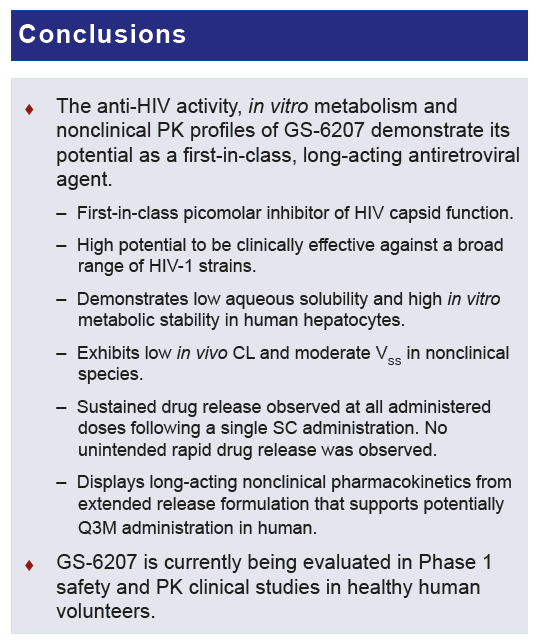
program abstract
GS-CA2: A Novel, Potent and Selective First-In-Class Inhibitor of HIV-1 Capsid Function Displays Nonclinical Pharmacokinetics Supporting Long-Acting Potential in Humans
Background: GS-CA2, an analog of GS-CA1, is a novel and selective inhibitor of HIV-1 capsid function. Safety and pharmacokinetics (PK) of GS-CA2 is currently being evaluated in healthy human subjects. Herein, we present the anti-HIV activity and nonclinical PK of GS-CA2, demonstrating its potential as a first-in-class long-acting antiretroviral agent.
Methods: GS-CA2 antiviral activity was evaluated in MT-4 cells and in human peripheral blood mononuclear cells (PBMCs) acutely infected with HIV-1 (IIIb) and clinical HIV-1 isolates, respectively. Standard in vitro methods were used to characterize compound lipophilicity (LogD), solubility and relative binding to cell culture and plasma proteins. Metabolic stability was assessed in cryopreserved hepatocytes. GS-CA2 PK parameters following intravenous and subcutaneous (SC) administration were assessed in rat and dog. GS-CA2 plasma concentrations were determined by HPLC-MS/MS.
Results: GS-CA2 showed potent and selective anti-HIV activity in MT-4 cells (EC50 = 0.1 nM; CC50 = 26.6 ÁM). In PBMCs, GS-CA2 displayed a mean EC50 of 0.05 nM (0.02 - 0.16 nM) against 23 HIV-1 clinical isolates representing all major subtypes. GS-CA2 is highly lipophilic (LogD of 3.7) with low aqueous solubility (< 0.01 mg/mL) and low predicted clearance (CL) in human hepatocytes (0.01 L/h/kg). In rat and dog, GS-CA2 demonstrated low CL (< 4% of liver blood flow). GS-CA2 PK in rat and dog exhibited sustained and slow drug release following a single SC administration. Factors including species, formulation, concentration, dose, volume and number of injections were examined for the effect on systemic exposure over time. GS-CA2 plasma concentrations in dogs (Figure 1) were maintained above the human plasma protein binding-adjusted EC95 (4 nM) for the entire study duration (16 weeks).
Conclusion: GS-CA2 is a selective and first-in-class HIV capsid inhibitor with picomolar potency and potential to be clinically effective against a broad range of HIV-1 strains. In animals following a single SC injection, GS-CA2 maintained therapeutically relevant concentrations for > 3 months. These nonclinical data support clinical development of GS-CA2 as a novel long-acting antiretroviral agent suitable for the treatment of HIV-1 infection.
Jim Zheng, PhD1, Stephen R. Yant, PhD2, Shekeba Ahmadyar, BS2, Tiffany Y. Chan, BS1, Anna Chiu, PhD3, Tomas Cihlar, PhD2, John O. Link, PhD4, Bing Lu, BS1, Judy Mwangi, MS1, William Rowe, PhD5, Scott D. Schroeder, BS4, George J. Stepan, BS2, Kelly Wei Wang, MS1, Raju Subramanian, PhD1 and Winston C. Tse, PhD4, (1)Drug Metabolism, Gilead Sciences, Inc., Foster City, CA, (2)Biology, Gilead Sciences, Inc., Foster City, CA, (3)Process Chemistry, Gilead Sciences, Inc., Foster City, CA, (4)Medicinal Chemistry, Gilead Sciences, Inc., Foster City, CA, (5)FPD, Gilead Sciences, Inc., Foster City, CA
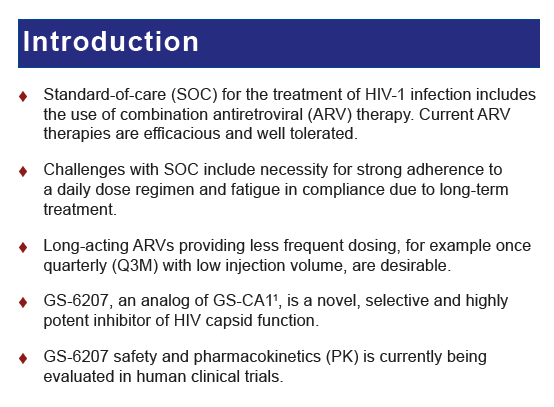
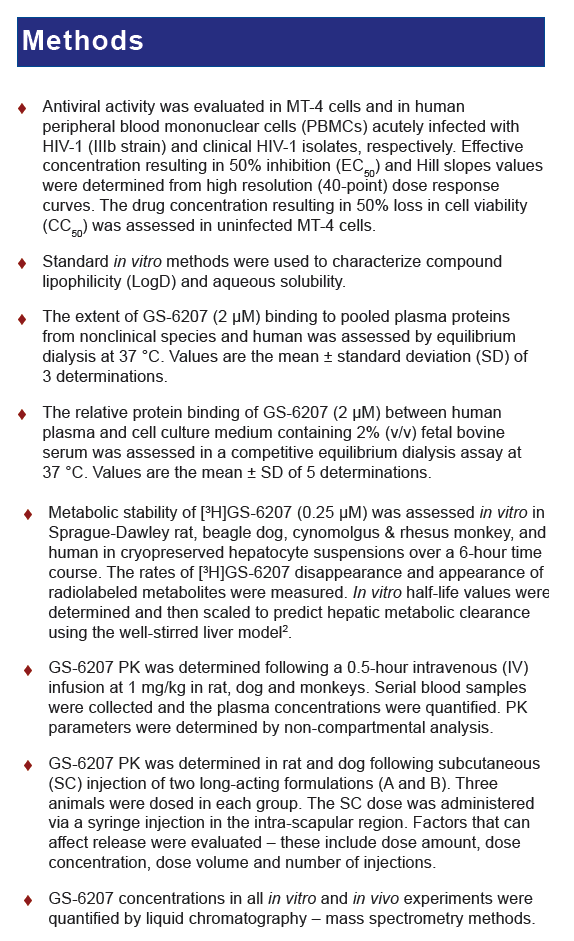
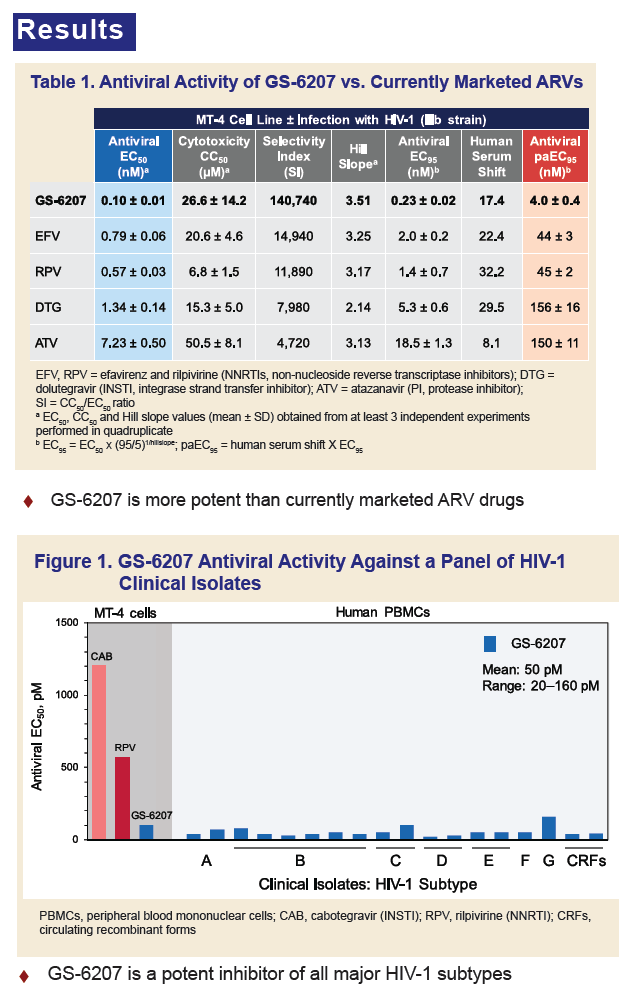
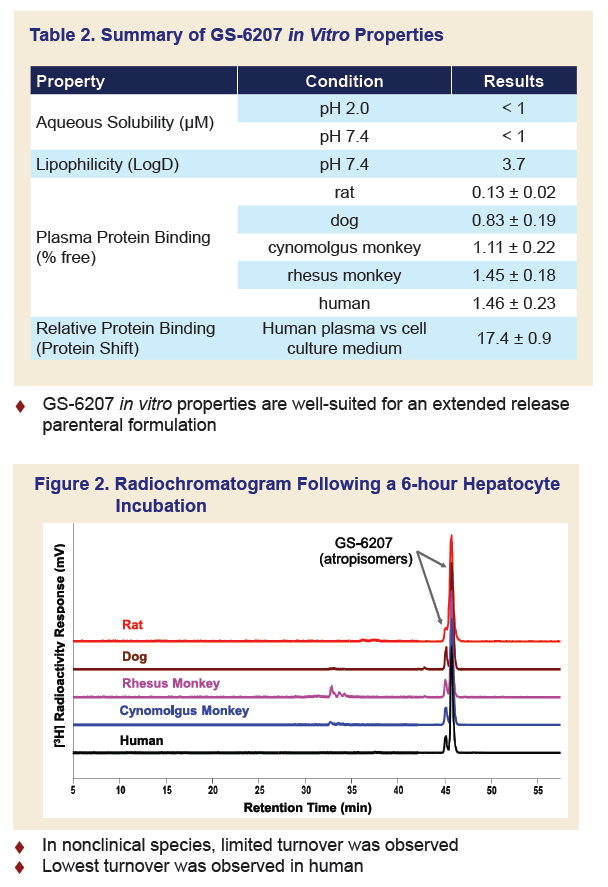
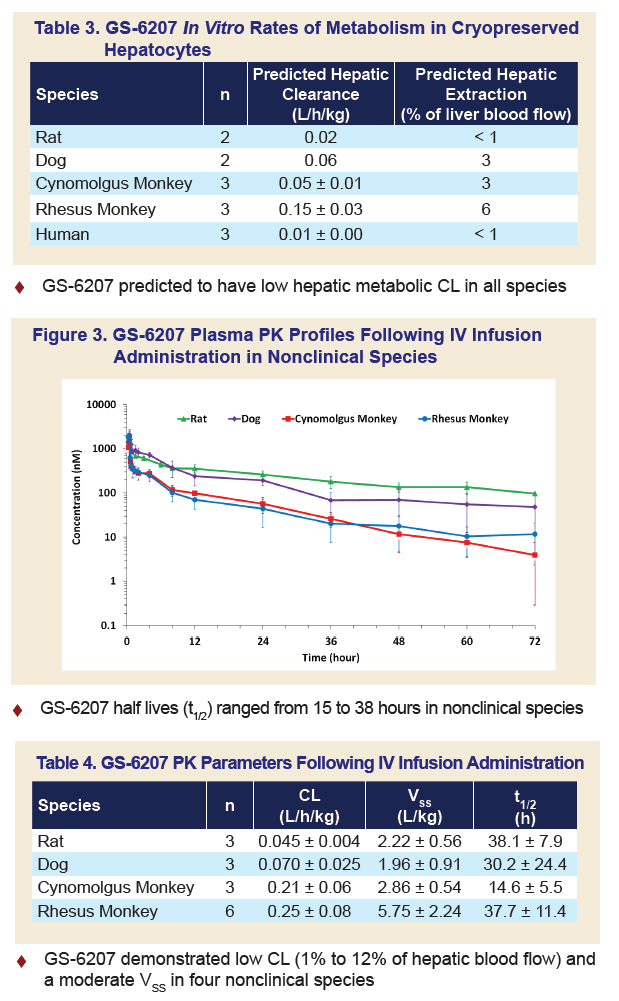
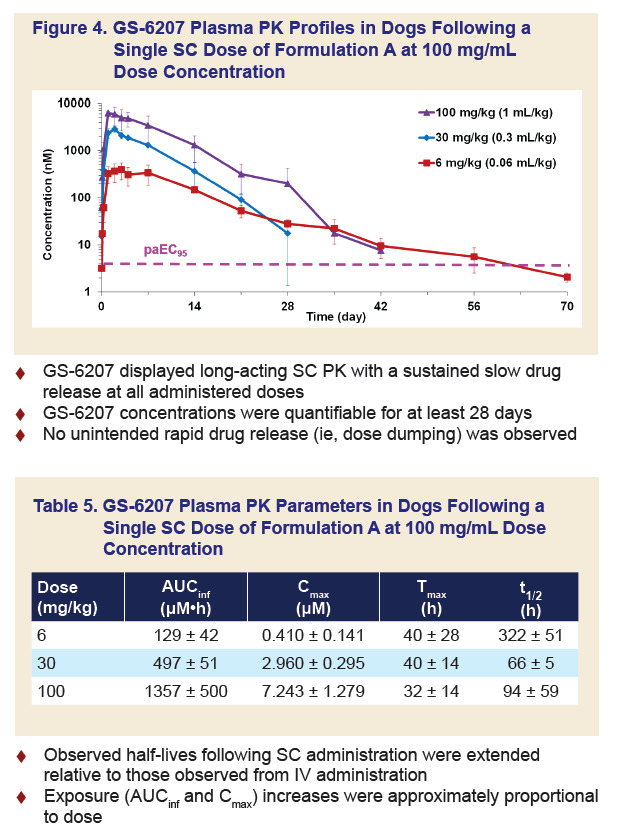
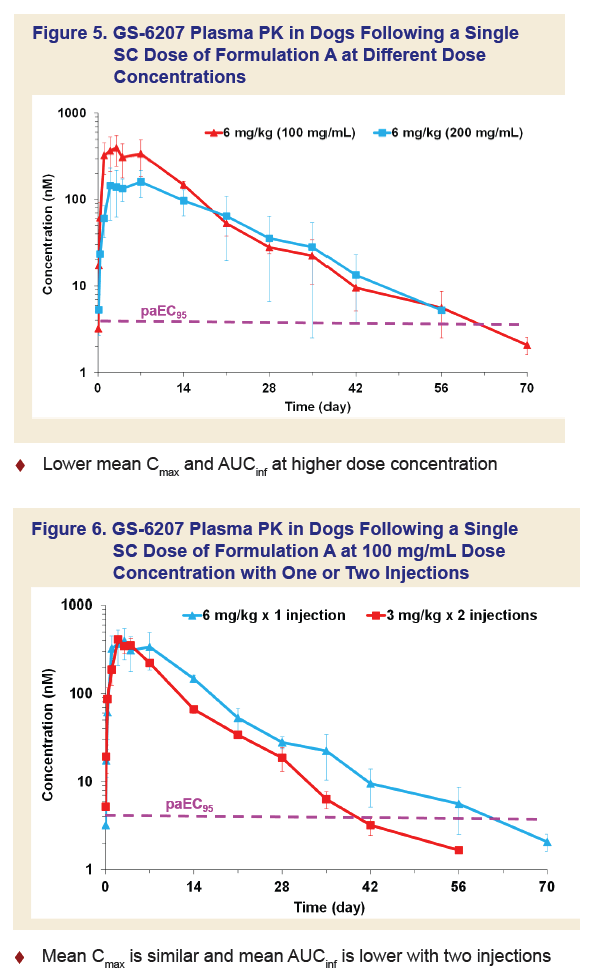
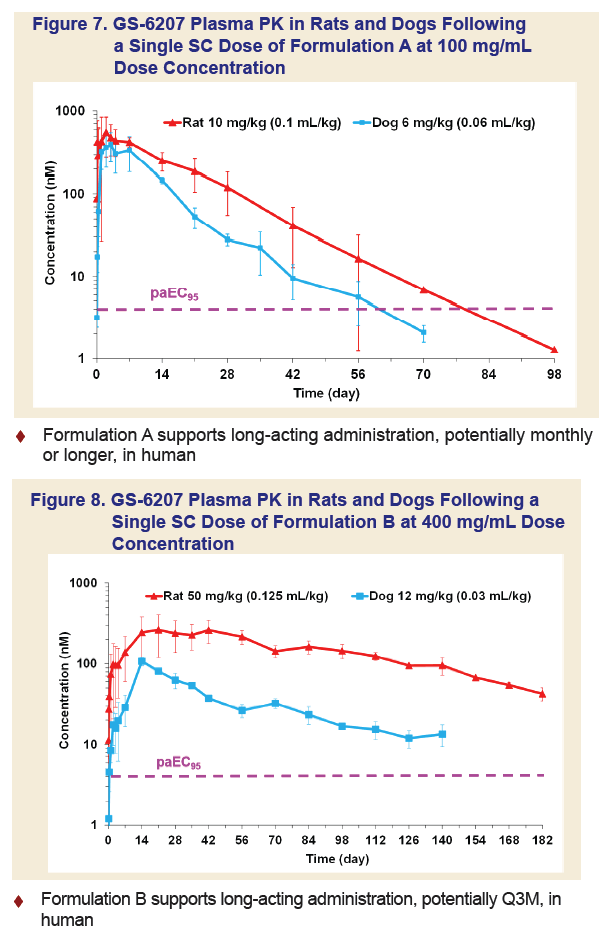
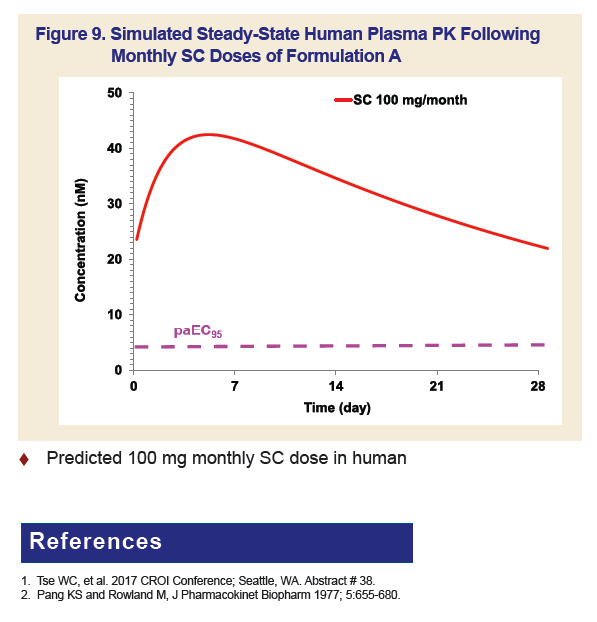
|
| |
|
 |
 |
|
|